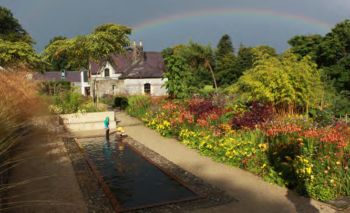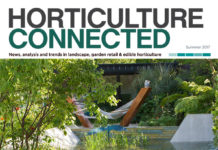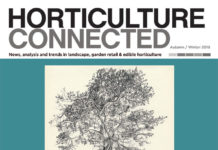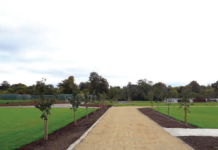Highly regarded Landscape Architect, Bloom gold medal winner, and president of the Garden & Landscape Designers Association (GLDA), Patricia Tyrrell reports on some of the high notes and salient points from the recent seminar
Feedback from this year’s seminar makes it arguably one of the most enjoyable seminars, with a lovely community atmosphere. Our speakers contributed greatly to this with their relaxed attitudes and accessibility to the audience.
Probably most in our profession have heard of mycorrhizae unless they are living under a rock, in which case they have probably encountered them personally. According to the first speaker, Peter Korn, this is where they do their best work. Mycorrhizae are those useful symbiotic fungi that form an alliance with plants, to maximise nutrient uptake for both plant and fungus. Available to purchase in powder form, you can sprinkle them into planting holes, like magical fairy dust, to enhance the establishment of your trees, shrubs and perennials. What I did not know is that the magical fairy dust may not work if your soil is already rich.
Peter Korn hails from Sweden, and his passion for his subject made a big impression on the audience. He prefers to plant into the pure sand, where due to the poor nutrient availability, plants will form extensive alliances with mycorrhizae to enable them to take up nutrients. In rich soils, this does not happen as the plants have little need of assistance to access the nutrients that they need. The poor sandy substrate also reduces weed competition and therefore maintenance. Dry at the surface but moist beneath, the sand draws moisture by capillary action through its open-pored depths.
In his garden, which he gardens with his partner Julia, he has carved out niches for plants from all over the world, that will survive in the Swedish climate. When I say carved out, he has done this physically with his own hands, showing us images of a gorge he created, where plants adapted to various aspects of that microclimate can grow.
The second speaker James Basson is probably best known to us as the winner of best in show award at Chelsea 2017 for a spectacular quarry garden, again illustrating the small specialist niches that plants can occupy, even in poor conditions. James is from England but now lives in the South of France where he and his wife Helen have set up Scape Design.
In his designs, he likes to use locally sourced young plants that are compatible with the native climate and soil, requiring little or no irrigation. This lack of irrigation reduces maintenance and creates a landscape that is more sympathetic to the local environment.
To achieve this, he experiments with plant combinations and monitors them over time to see what will survive, what will thrive and what fades out. Taking this one step further, he has started to explore the use of software to try to predict how this will happen over the short and long term. This could be an exciting development, with wider uses for maintenance of public spaces. With great honesty, he took us through some of his planting successes and failures and the learning processes involved.
He brought us through his progression at Chelsea, from his first garden there to his largest one last year, and the concepts behind them. Also of real interest was his sponsorship progression and the risk he took in financing his first show garden in Chelsea by himself.
After lunch June Blake, the creator of one of Ireland’s most beautiful gardens, in Blessington, Co Wicklow, talked us through her progression from sheep farmer and jewelry designer to a full-time garden creator. In this case, there is no doubt of who controls the evolution of this garden. Though all design decisions are hers it is interesting to note how strongly influenced she is by the garden’s setting, its history, geology and climate and by her own experiences growing up in those surroundings. The garden has become a palimpsest of all that has gone before and is so much the richer for it: relics of archaeology, buried walls rediscovered and the use of more recent clues to past farm use in the form of steel edgings recycled from the farmyard barns.
A master plantswoman, she chooses plants that retain an element of wildness, so that the planting is in harmony with the surroundings. She grows many of her plants from seed and experiments with painting swathes of them through the garden. Layers of perennials ensure reduced weeding, and seasonal flow, with colour for long periods of the year.
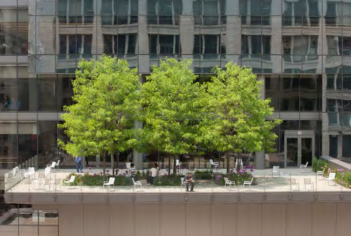
From the farmlands and landscapes of Wicklow to the city of Chicago, USA, Douglas Hoerr was the final speaker. Douglas spent his early years on a farm in Indiana. He followed his interest in land, design and building to Landscape Architecture. A keen interest in plants brought him to England on a sabbatical where he learned from some of the best: Beth Chatto, Alan Bloom and John Brookes. Returning to Chicago he started to get noticed for a fresh approach to planting, involving an adventurous use of perennials in the Chicago streetscapes. His business grew from there. He now leads Hoerr Schaudt Landscape Architects, a 40-person studio. His message was an experiment and have some fun but take careful note of the results. Think about the client and the future maintenance available at the outset of your design. Douglas advises the use of lots of annuals, to suppress weeds in the initial establishment phase, and to provide instant gratification for the client.
Gardens evolve and change. All the speakers focused on working with nature as the ultimate answer to the evolution and maintenance of a garden. The message was ‘adapt, experiment and learn’. Look to nature.
If our speakers had one thing in common it was in a shared sense of adventure, an ability to question, to be unafraid of experimentation and trying new things, and most of all following their passions and interests. This is where fulfillment and success lie. ✽
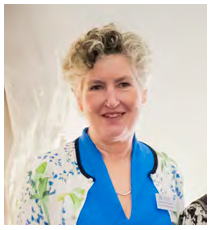  |



